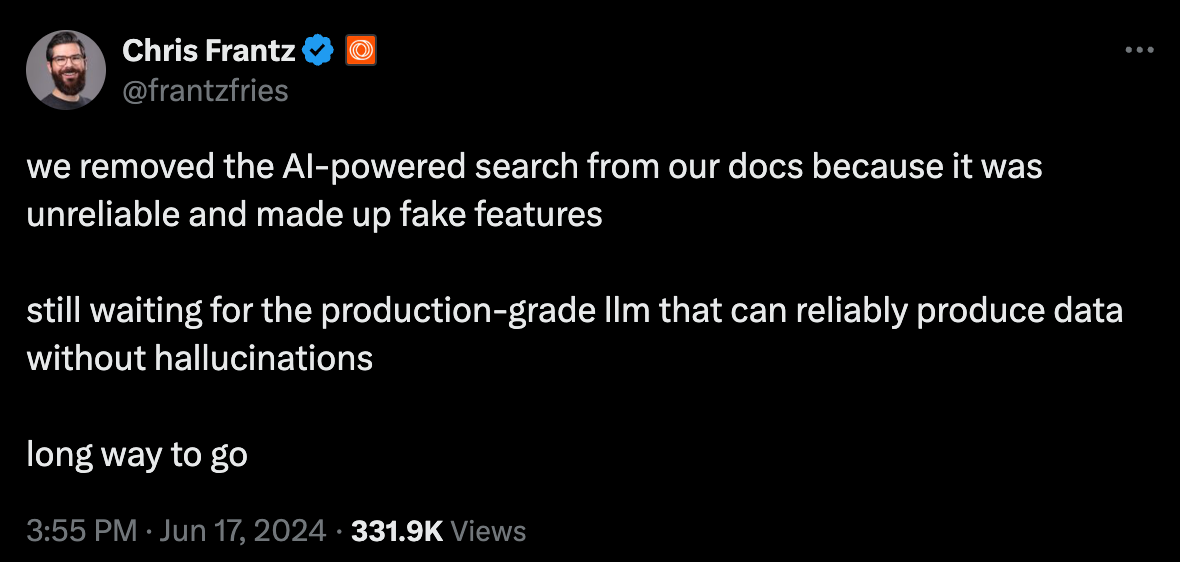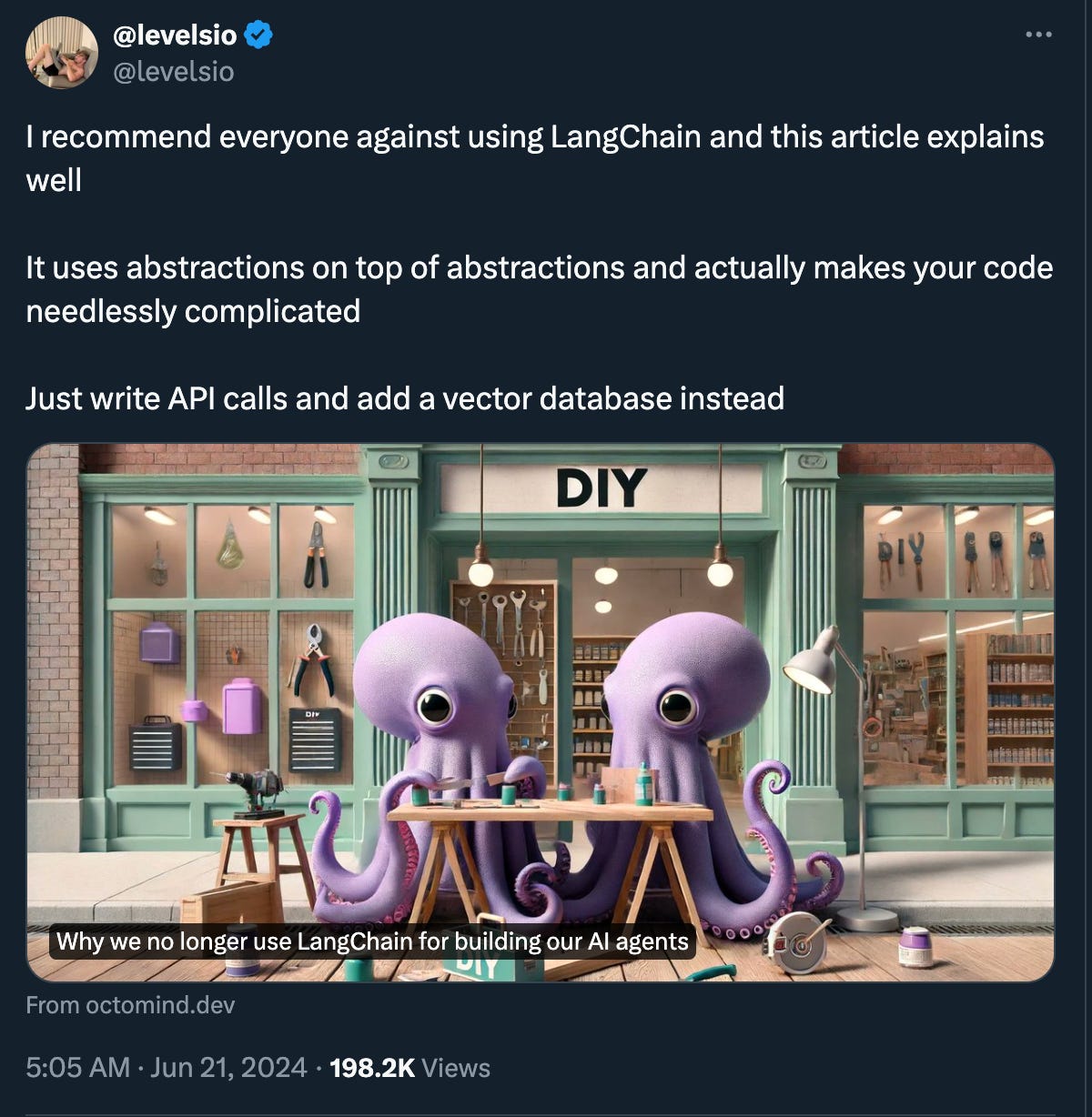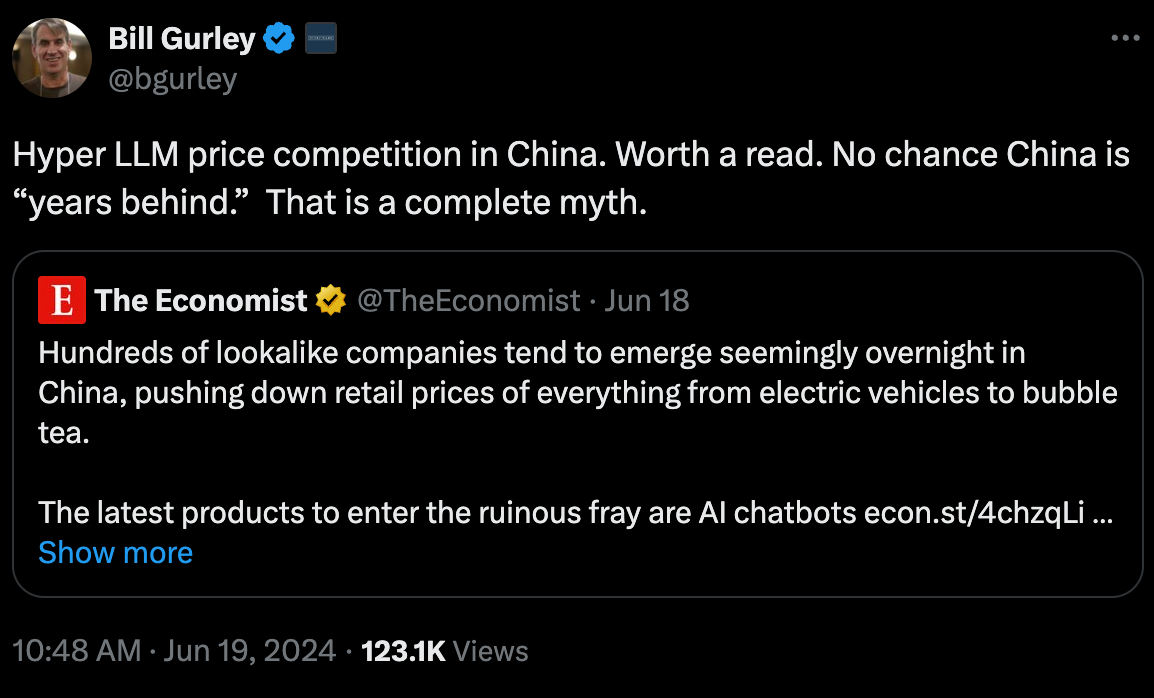What’s 🔥 in Enterprise IT/VC #399
Crossing the valley of death at boldstart, 28 years of inception investing in the enterprise captured in 100 minutes on The Peel Podcast
If I could encapsulate some of my learnings over 28 yrs in 100 minutes, this is the one to watch or listen to. Turner Novak (Banana Capital) took me back to the Valley of Death for boldstart ventures, how we made it through, why an amazing + supportive wife/partner is 🔑 to starting anything, + I even got to share lots of my 👴🏼 sayings and frameworks on Inception investing and boards.
🙏🏼 for one of the most fun + in depth conversations I’ve had in venture + startups. Watch below.
Or listen in on Apple Podcasts
and Spotify
Outline here from Turner’s tweet with timestamps:
Ed’s the founder of @boldstartvc, backing bold founders reinventing the enterprise stack at the inception stage.
Our 100+ minute convo covers key moments building boldstart, from its first $1m fund in 2010 to over $850m in AUM today. Ed takes us inside the grind of raising their first four funds, and being the first investor in companies like Snyk, Superhuman, Kustomer, BigID, Blockdaemon, and ProtectAI.
Ed also shares his playbook for building customer relationships, the 5 P’s of inception stage investing, the 3 Ch’s of a good board member, thinking through winners and losers in AI, and why he likes investing before there’s a market map.
Watch below or links in the replies!
Timestamps:
3:48 Evolution of early stage investing
5:11 Inception stage investing
10:32 Backing bold founders reinventing the enterprise stack
11:20 Repeatable ways to build enterprise businesses
12:04 The 5 P’s of early stage investing
14:12 Backing Guy Podjarny and Snyk
18:18 Knowing when to follow-on
19:18 The 3 Ch's of a good board member
22:01 How Ed’s board role changes over time
24:20 Balancing founder friendly with returns
27:20 How to build customer relationships
30:24 Advice for closing customers
33:47 Creating the Seed category in 2009/10
37:31 boldstart’s $1m Fund 1
39:00 Why Ed didn’t join a large firm in 2012
39:55 boldstart’s $16.5m Fund 2
40:26 Why LPs passed on the first funds
43:11 Leading rounds in Kustomer, Snyk, BigID, and Blockdaemon in Fund 3
47:09 Why $112m Fund 4 was the hardest to raise
50:52 Ed’s approach to LP fundraising
55:12 Inside Meta’s acquisition of Kustomer + sale back to the founders
59:52 Backing Rahul from Superhuman a 2nd time
1:00:52 The different GTM playbooks
1:02:20 Importance of contract size and time to close
1:05:07 Why AI makes security more important
1:06:11 When to switch from founder-led sales
1:07:46 Backing ProtectAI after a conference
1:08:28 Balancing in and outbound sales
1:09:55 Winners and losers in AI
1:15:26 Building the boldstart team
1:19:33 Lessons being an interim CEO
1:22:18 How ZIRP pulled revenue forward
1:29:08 The death of high growth software
1:32:58 Identifying startup opportunities incumbents won’t crush
1:35:00 Second order effects of AI
1:36:46 Using "Intuitive TAM" to size new markets
1:38:04 Investing before there’s a market map
1:38:57 Balancing family, fitness, and careerAs always, 🙏🏼 for reading and please share with you friends and colleagues!
Scaling Startups
# I highly recommend watching - some great advice for startups; my take revolved around getting those first 10 in the office to get shit done fast, focus on solving fundamental problems vs chasing what VCs think is cool, and raising the right amount of capital
At our Vintage VC Summit in San Francisco, we had the opportunity to engage with leading venture capitalists on crucial industry topics. 🚀
The 2nd episode of our three-part series, "VC Insights," focuses on Advice for Founders. 💡
The episode features insights from-
⭐ Gaurav Jain (Afore Capital)
⭐ Ed Sim (boldstart ventures)
⭐ Raanan Bar-Cohen (Resolute Ventures)
⭐ Shuly Galili (UpWest)
Don’t miss out on these essential tips for founders looking to make their mark. ✨😎#Greatness - What Michael Jordan and Kobe had in common according to their trainer (from David Senra, Founders Podcast):
1. You can't excel at anything before you train your mind. Mental dominance is what ultimately makes you unstoppable.
2. If one thing separated Michael from every other player, it was his stunning ability to block out everything and everyone else. He was able to shut out everything except his mission.
3. These (Jordan and Kobe) are the most driven individuals you'll ever know, with an unmatched genius for what they do: they don't just perform a job, they reinvent it.
4. The greats never stop learning. All the hours of work have created an unstoppable internal resource they can draw on in any situation.
5. The most important thing, the one thing that defines and separates him from any other competitor: He's addicted to the exquisite rush of success and he'll alter his entire life to get it.
6. He does not care what you think.
7. You don't get to be the best at anything without blistering confidence and an impenetrable shell.
8. Most people run from stress. Run to it. Stress keeps you sharp, it challenges you in ways you never imagined and forces you to solve issues and manage situations that send weaker people running for cover.
9. Good things come to those who work.
10. They expect to succeed, and when they do, they never celebrate for long because there's always more to do.#rarely does one get a look at investor presentations, 👇🏼 this from Thoma Bravo software buyout fund is a must read, some amazing consistent performance 🤯 - full PDF presentation here
#❤️ this from Josh Miller, CEO of the browser company - this spread virally this week and a reflection of all the AI hype videos with no product, we have to change + hype on shipping and not just ideas - read 🧵
I'm gonna go quiet on Twitter for the rest of the Summer.
Feel like it's time for @browsercompany to "show not tell" what we think the future looks like – instead of talking about it.
Why the vow of silence? Things have felt off in our industry recently. Specifically...#Time is not your friend when it comes to closing deals…
#great video interview with Rahul Vohra, Superhuman, on how the company value of delighting customers translates into culture
Enterprise Tech
#one of best launch videos I’ve seen in awhile, super inspirational from Superhuman, a portfolio co
#great read from David Cahn at Sequoia - AI’s $600B Question - The AI bubble is reaching a tipping point. Navigating what comes next will be essential.
In September 2023, I published AI’s $200B Question. The goal of the piece was to ask the question: “Where is all the revenue?”
At that time, I noticed a big gap between the revenue expectations implied by the AI infrastructure build-out, and actual revenue growth in the AI ecosystem, which is also a proxy for end-user value. I described this as a “$125B hole that needs to be filled for each year of CapEx at today’s levels.”
This week, Nvidia completed its ascent to become the most valuable company in the world. In the weeks leading up to this, I’ve received numerous requests for the updated math behind my analysis. Has AI’s $200B question been solved, or exacerbated?
If you run this analysis again today, here are the results you get: AI’s $200B question is now AI’s $600B question...#lest we forget, still a long way to go
#this blew up on Friday - why not to use LangChain when building agents…
#Brian Halligan, co-founder of Hubspot, on where value accrues in AI. I for one do believe there is a ton of value at app layer as the infrastructure gets commoditized, but I don’t agree with him that it is similar to Hubspot as market and times are different than 2006. We have something called incumbents who are smart and already cover every single vertical that Brian is referring to when it comes to LLM wrappers. IMO, the opportunity is not adding LLM wrappers but to rethink what can be done fundamentally with AI-native apps first, for example, Perplexity is pretty cool when it comes to reimagining search, and can’t wait to tell you more about what’s in our boldstart portfolio in stealth as well! Any how, check out the comments by clicking the tweet as it’s a lively conversation.
#HeyGen platform to create life-like video avatars for sales just raised $60M at a $500M valuation and revenue is at $35M (Bloomberg)
To create an avatar, a user must submit a video of themselves that the company’s AI model can train on. Once the avatar has been generated, users can type in a script and pick a template to make a video. The company uses software from startups such as OpenAI to generate text. It also uses technology from OpenAI and voice-cloning startup ElevenLabs to generate voices.
The company said it has snagged more than 40,000 paying customers, and over the past year grew annualized recurring revenue from nothing to more than $35 million. The company, which offers free services and paid subscriptions starting at $24 per month, has been profitable since the second quarter of 2023.
China ties and deepfakes
While HeyGen has figured out how to make money from generative AI — no small feat in the industry — it’s confronting other challenges. HeyGen has been scrutinized by lawmakers for its early connection to China, at a time when the US is focused on national security risks from China developing cutting-edge AI systems.#The best-funded generative AI startups in Europe have something in common: Big Tech experience (CNBC)
Most of the top-funded generative artificial intelligence companies in Europe were founded by entrepreneurs with experience at U.S. technology giants, according to a new report from venture capital firm Accel.
The report, produced in partnership with Dealroom, found a quarter of the 221 generative AI companies across Europe and Israel previously worked at Apple, Amazon, DeepMind, Meta, Google and Microsoft.
That figure rose to more than a third (38%) for the top 40 European and Israeli generative AI companies in terms of venture funding raised, and 60% for the top 10 generative AI companies for funding levels.#another OpenAI case study for a boldstart portfolio co; this one for Clay which is reinventing sales prospecting
Successful go-to-market (GTM) teams need comprehensive, high-quality data, but the process of gathering, validating, and enriching this data is typically fragmented across many tools. This bottleneck slows the pace of sales outreach. Clay(opens in a new window) helps GTM teams scale their outreach by centralizing lead information and enabling personalized messaging.
Clay integrated with GPT-4 to create Claygent, an AI agent that can research anything. Claygent visits websites to find and summarize relevant information, replicating how sales development researchers operate, but much faster and cheaper. With Claygent, a single person can handle the work of an entire team.
The company has achieved 10x year-over-year growth for each of the past two years, with over 100 thousand users including major customers like Intercom, Verkada and Notion.# what is infrastructure as code and how do you automate it? Check out this visual and explainer from Env0, a portfolio co. Wait till AI starts automating even more of this!
Markets
#🤯 There are 3,000 less publicly traded companies today vs. 1996!
In 1996, there were 7,300 publicly traded companies in the US. Today there are 4,300.
Nearly 90% of all firms with revenues greater than $100 million are now private, per Apollo.
Privately-owned firms also account for nearly 80% of all US jobs openings.#from Clouded Judgement, median Net $ Retention of the cloud software world is now 110% with top decile at 120% and top quartile at 115%
#🤔 Nvidia’s Ascent to Most Valuable Company Has Echoes of Dot-Com Boom (WSJ)
John Chambers, who was chief executive of Cisco during the dot-com boom, said there are some parallels, but the dynamics of the AI revolution are different from previous ones such as the internet and cloud computing. Chambers, now a venture investor, has made big bets on AI in cybersecurity and other arenas.
“The implications in terms of the size of the market opportunity is that of the internet and cloud computing combined,” he said. “The speed of change is different, the size of the market is different, the stage when the most valuable company was reached is different.”#don’t forget China when it comes to AI
#Huntress is delivering in the cybersecurity market as it just raised $150M at a $1.5B valuation. SMEs are notoriously hard to sell into even though a massive market but Huntress MSSP provides a 24/7 SOC to allow SMEs to deploy managed detection and response for endpoints and identities in minutes. Given that it’s almost at $100M ARR, we’re looking at 15X trailing and assuming slower growth to 50% and $150M of ARR NTM, it’s 10x forward multiple.
The new investment follows years of meteoric growth as Huntress continues its over 70% year-over-year revenue growth for the past two years. Additionally, the demand for Huntress products is evident in customer validation, being voted the industry leader in endpoint detection and response for the 8th consecutive season and the industry leader in managed detection and response by customers in G2 rankings earlier this year. This customer fanbase puts Huntress at the doorstep of becoming a centaur in cybersecurity as they approach $100M ARR and nearly 3.5 million endpoints and identities protected.







